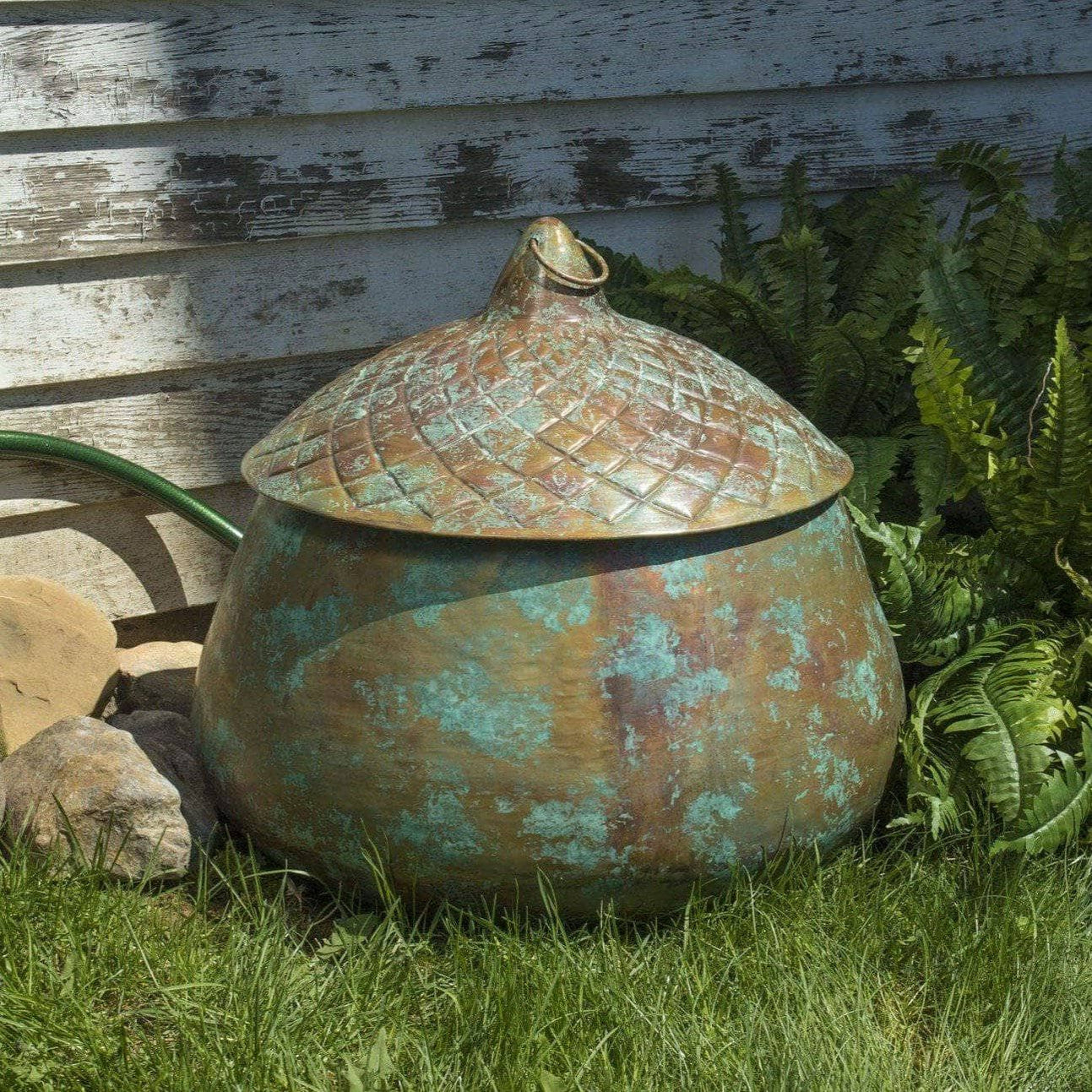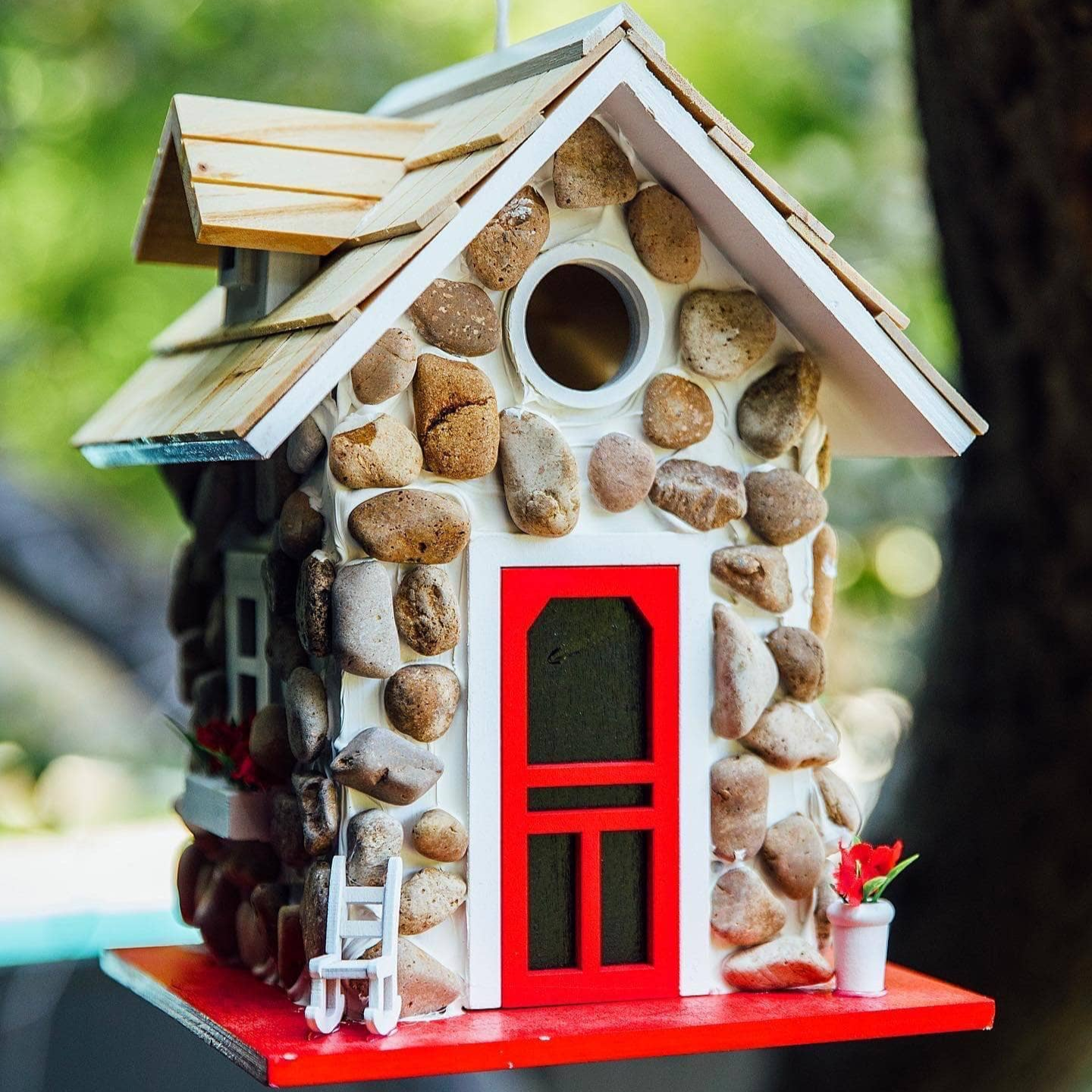
Who Invented the Sundial? And is it just a garden ornament now?
Share
It's not uncommon to see a sundial in a garden or landscaping of sorts. But many wonder, is the sundial still relevant or only seen as a garden ornament evermore?
The truth is, there is so much more behind this fun garden piece than most realize. The history and culture linked with sundials go as far back into ancient Greek civilization. Today, the use of sundials has drastically changed, but it doesn't change the fact that the Greeks knew what they were doing.
Let's take a closer look into the history of sundials to understand better their impacts on civilizations of the past, present, and future.
History of Sundials
Even before sundials came into the history of man, there was another option to tell time. The first water clocks of history came from Persia, Egypt, and Babylon but were also advanced later by the Greeks and Romans. These devices used the flow of water to measure time.
But beyond that, the most natural and ancient method of telling time is by use of sundials. Historically, it is believed that sundials' origins came from the early human civilizations noticing the changes in their shadow throughout the day.
Honestly, any vertical structure in which you can see the sun's movement through the day can be considered a sundial. These structures can be especially effective in noting the summer solstice, creating a shadow tip.
Who Invented the Sundial

In the history of sundials, the oldest sundial devices came from the ancient Egyptian shadow clock built around 1500BCE. The obelisks shadow clocks were created in an L shape and placed east to west amongst the cardinal points. This ancient form of time-telling was still used in rural parts of Egypt up until very recently, proving these sundials to be incredibly effective devices.
Another pivotal picture of the sundial history in science comes from the Solarium Augusti, constructed by the ancient Romans. The gnomon parallel of this structure cast its shadow amongst a marble pavement design with a series of bronze lines to tell time.
The Sundial of Today
Today, the sundial is mass-produced as an ornamental piece to add to gardens or other landscaping. At the same time, they are beautiful additions to any yard. Unfortunately, these more popular sundial options lack accuracy in telling time.
However, if you're able to find a sundial that has been both adequately designed and installed specifically to your location, it can help you to be able to tell time more accurately. However, keep in mind that even the most accurate sundial will help identify solar time, which varies by approximately 16 minutes or so from mechanical clocks.
What Is a Clock
The most ancient clock known to man is the clock by which the Earth and the Sun operate daily. Simply put, a clock is a means for keeping time or counting cycles of time.
The clock is the advancement of human civilization moving beyond the sundial into finding a way to count, or keep, time without relying on the sun and therefore not worrying about the device's position throughout the year. In short, the clock, or other forms of mechanical clocks, would not exist throughout civilizations past or present without the history of sundials.
Future of Sundials
While telling time required people to look up into the sky to tell time, sundials allowed this to change. People then moved to look upward from the earth to view the sundial invention, which was typically mounted outside of walls of public buildings or churches.
Today, rather than relying on the shadows, we have mechanical, quartz, and even atomic clocks amongst us humans. We have the convenience of telling time from clocks in our homes or watches on our wrists. We don't have to worry about the sun's position in the sky throughout the year and watch how the shadow from the dial changes. Instead, thanks to the innovators of today, we have means of telling time much more accessible.
With the help of science, mathematicians, and astronomers working as one, one can only watch and wonder what the future of sun dials will look like. Let's take a closer look at the path we're headed.
The Thermal-Difference Device
The future technology of the sundials of today is far advanced from the Egyptians shadow clocks of the past. Today, a Thermal-Difference device relies on a sundial to regulate the clock within it. This advanced time-telling machine uses a sapphire glass window that allows the sun through different parts of the day to recalibrate itself and continue doing so for the next 10,000 years.
How a Sundial Works

Any form of a stick can be used as a sundial. In the simplest form, you could almost potentially use a leg to create a sundial effect. The shadow stick was a historical way of telling time, in which people figured out the times of day by looking at the length and position of the stick's shadow.
From the point of view of an astronomer, you can break down how a sundial works by looking at the Earth on its axis. Because of this axis, the sun appears to move across the sky throughout the day. The shadows of objects on Earth will move in a clockwise direction in the northern hemisphere (think New York) and a counter-clockwise (Sydney, Australia) direction in the southern hemisphere.
But, because of the Earth's axis and its annual trip around the Sun, the shadows cast by the Sun change daily. This makes positioning any type of shadow tip or sundial crucial, depending on the numbers of your longitude and latitude.
Sundials work like a shadow clock, tracking the sun's shadow across it. The plate or pin casts the shadow onto the bottom of the device is known as the gnomon. The bases of sundials have lines along their surface part, which is similar to the face of a clock.
Three primary factors go into the ability to tell different times of day with sundials. Ensuring sundials are set up specific to their location is crucial; keep in mind the following.
Gnomon Angle
Ideally, the gnomon angle should identically match the latitude. If the gnomon angle matches, you won't have to adjust your sundial manually. Sometimes, adjustments need to be made due to the sun's changing position through the different seasons to account for equal hours of the day. Thankfully, the proper gnomon angle will alleviate this concern.
Hour Lines
The hour lines of sundials are drawn out according to your latitude. While it might not make sense, the lines representing hours may not all be evenly distributed throughout the base, depending on where you live in the world.
Longitude
Always be mindful of your longitude when it comes to sundials. The longitude will help you establish how to place it in your garden, with your hour lines drawn out on your sundial base.
Finally, when you receive your sundial, you'll need to make sure you can identify true north to make sure your time telling is the most accurate.
Knowing the Official Time
To know the official time in reading a sundial, you have to apply the following formula:
- Official Time = Sundial Time + Equation of Time +/- Longitude + (1 or 2) hours
The equation of time can be determined by the difference between mean solar time and accurate solar time. The longitude is regarding your location, in which the + part will refer to the west and the - to the east. Lastly, you will add 1 hour for the winter or 2 hours in the summer to be able to tell the real, official time on your sundial.
Finding the Perfect Sundial for Your Garden
As you can see, sundials are still very much relevant and a timeless piece for your garden. So, if you're looking for a historical piece to add some value to your yard, it's time to search for the perfect sundial. Here are a few of our favorite places to search for garden sundials.
Local Second-Hand Shops
If you're looking for reasonably priced sundials, check your local second-hand shops. You know that if you can find a sundial here, it will undoubtedly be a pretty unique piece. The biggest challenge with second-hand shopping is not being able to find what you're looking for. But, if you're patient, you'll be surprised with what you can find in due time.
Facebook Marketplace
For bargain hunters who prefer browsing from the comforts of their own home, Facebook Marketplace is another excellent place for your searches for sundials. Facebook Marketplace and other online marketplaces, like OfferUp, are great ways to find unique products at unbeatable prices. You can even find shipping available for some products. Similar to second-hand shops, though, you'll want to do your best to research the overall quality before making your final purchase.
Happy Gardens Store
The Happy Gardens Store is an excellent resource for anyone interested in finding a sundial for a great price without having to compromise on quality. Here you can sift through all sorts of different aesthetics when it comes to sundials, from slate sundials to aluminum sundials to brass sundials. And if you're feeling overwhelmed by all the options, don't be afraid to reach out for help. At Happy Gardens, we're here to help guide you to the garden of your dreams.
About Happy Gardens
The Happy Gardens online collection is a great place to check out if you've been on the hunt for thoughtfully designed garden merchandise and decor for your outdoor spaces. So, if you've been endlessly searching for perfect sundials, charming rain chains, or ornate bird feeders, Happy Gardens undoubtedly has exactly what you're looking for and then some. One of the best parts is that each piece you'll find in our online collection has been individually handcrafted and chosen with love for none other than your happiness.
View an expansive assortment of special collections, all of which are beloved and top-rated garden products at The Happy Gardens store. Here you can select from some of our favorite pieces, like our artistic rain gauges, eye-catching garden statues, or unique spinners to decorate your outdoor areas. You can also check out our brand new line of merchandise during your searches, offering exciting gifts available all year round. Check out our collection of tote bags, coffee mugs, and wine glasses, perfect for any occasion as a gift for the fellow garden enthusiast in your life.
Join the Happy Gardens mailing list to stay up to date on our latest collections. Simply enter your name and email address, and you can look forward to adding some excitement, not to mention countless garden tips and tricks, to your newsfeed. Feeling inspired? Please give us a follow on Instagram and Facebook, and show us your latest and greatest additions to your garden.
If you're feeling overwhelmed with options when it comes time to pick out your perfect sundials, feel free to reach out to our garden specialists via chat. Remember, here at Happy Gardens. We're happy to help!










